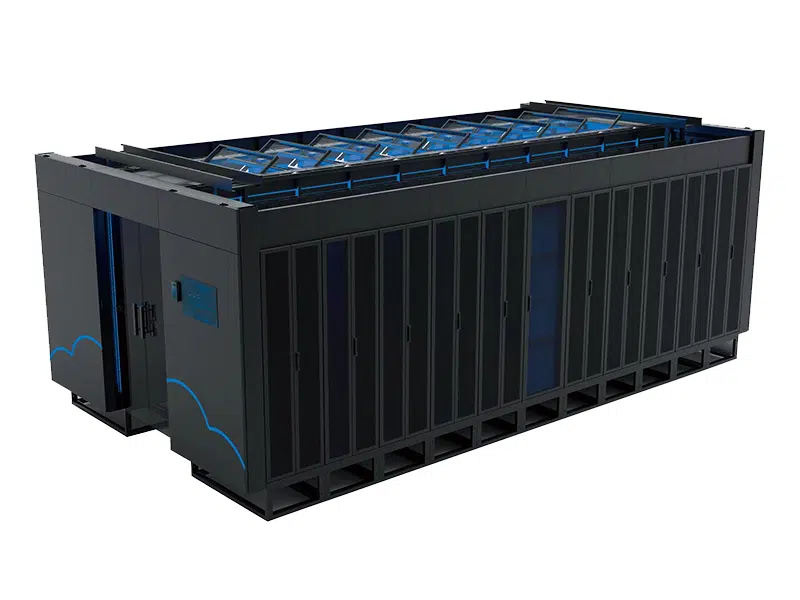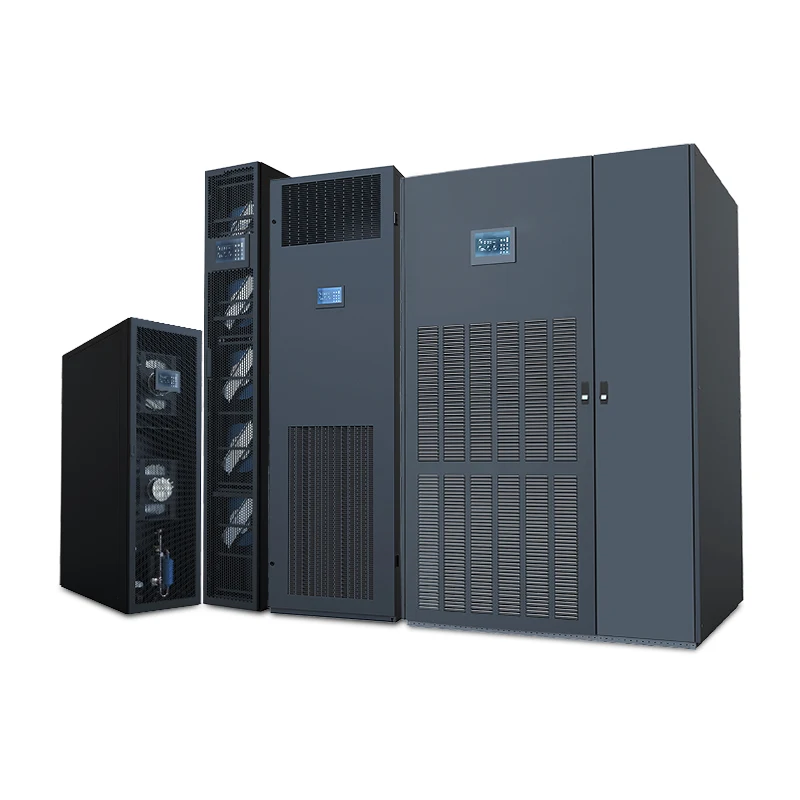Modular Data Center – From Architecture Innovation to Full Scenario Applications
Release time: 2025-05-26
As a core infrastructure of the digital era, modular data centers are reshaping the construction and operation models of traditional data centers through prefabricated design, high-density integration, and intelligent management.

Core Architecture and Technical Features
Modular data centers adhere to the philosophy of “factory prefabrication + on-site assembly,” decomposing the data center into five standardized module systems to achieve efficiency leaps through high integration:
Cabinet System: The Intelligent Carrier for IT Equipment
- Utilizes H-series cabinets compliant with national and IEC standards (dimensions: 600/800×1200×2000mm, 42U space), supporting top/bottom cabling and equipped with accessories such as blanking panels and cable organizers to optimize airflow management and installation efficiency.
- Maximum power capacity per cabinet: 10kW, enabling high-density server deployment. For example, in financial industry core rooms, a single-row 50-cabinet modular solution can support 500kW total power, meeting the computing demands of trading systems.
Power Distribution System: Balancing Safety and Efficiency
- Integrates UPS (3kVA-600kVA), precision power distribution cabinets, and intelligent PDUs, supporting dual utility inputs (ATS switching) and SPD lightning protection. For instance, a 200kVA modular UPS with N+X redundancy and intelligent sleep technology achieves over 96% system efficiency.
- Smart PDUs feature 24-port remote monitoring, collecting real-time voltage, current, and power consumption data for precise energy management.
Cooling System: Breakthrough in Proximity-Based Heat Dissipation
- In-row air conditioning (12.5-60kW) deployed between cabinet rows, combined with enclosed hot/cold aisle containment, enables “heat source proximity cooling,” reducing PUE to as low as 1.30—35% more energy-efficient than traditional room-level cooling.
- Supports fluorine-pump natural cooling, leveraging low outdoor temperatures to minimize compressor energy consumption, ideal for colder regions (e.g., Northern Europe, Northwest China).
Monitoring System: The Intelligent Management Hub
- Equipped with a 21.5-inch touchscreen (HMI), integrating power, environmental, and security data, and supporting northbound interfaces like ModbusTCP and MQTT for seamless integration with third-party DCIM platforms.
- Four-color LED alarms (normal/warning/critical/emergency) and multi-channel alerts (SMS, email, audible/visual alarms) enable second-level fault response. For example, smoke sensors trigger automated fire suppression upon detection.
Cabling System: Simplified Deployment Foundation
- Implements cross-row cable trays and under-cabinet routing channels, supporting hybrid copper-fiber deployment to minimize excess cabling and enhance maintenance efficiency. In large-scale IDC scenarios, modular cabling reduces deployment time by 40%.
Diverse Application Scenarios
The flexibility of modular data centers delivers unique advantages across industries and environments:
Large-Scale IDCs and Cloud Computing Centers
- Requirements: High-density computing, rapid scalability, low PUE.
- Implementation: Deploys micro-module enclosed hot aisle containment, achieving 10kW per cabinet and supporting 50-cabinet clusters. For example, an internet company reduced deployment time from planning to launch to just 6 months (50% faster than traditional builds) while maintaining PUE below 1.25.
Edge Computing and Industry-Specific Rooms
- Requirements: Space constraints, harsh environments (e.g., factory floors, medical rooms), high reliability.
- Implementation: Single-row modular cabinets (dimensions: 3600×L×2600mm, L≤15m) can be installed on standard concrete floors without raised flooring. In a smart factory, modular data centers hosted MES and IIoT devices, reducing latency to <10ms for real-time control.
Hybrid IT for Government and Enterprises
- Requirements: Legacy-cloud integration, data security compliance.
- Implementation: All-in-one modules with UPS, battery cabinets, and networking enable local storage with cloud backup. A government disaster recovery solution incorporated facial recognition + IC card access and video surveillance to meet Level 3 requirements of China’s Cybersecurity Law 2.0.
High-Altitude and Extreme Climate Regions
- Adaptive Design: Automatic power derating above 1,000m altitude ensures stable operation in low-pressure environments. In hot regions (e.g., the Middle East), extended outdoor unit lift (≤20m vertical gap) and optimized refrigerant circuits maintain cooling efficiency.
Comparison of core advantages
| Traditional data center | Modular Data Center | |
| Construction | 18-24 months | 6-12 months |
| PUE | 1.6-1.8 | 1.2-1.35 |
| Space Utilization | 40%-50% | 60%-70% |
| O&M Cost | 40%+ | Reduce 30%+ |

